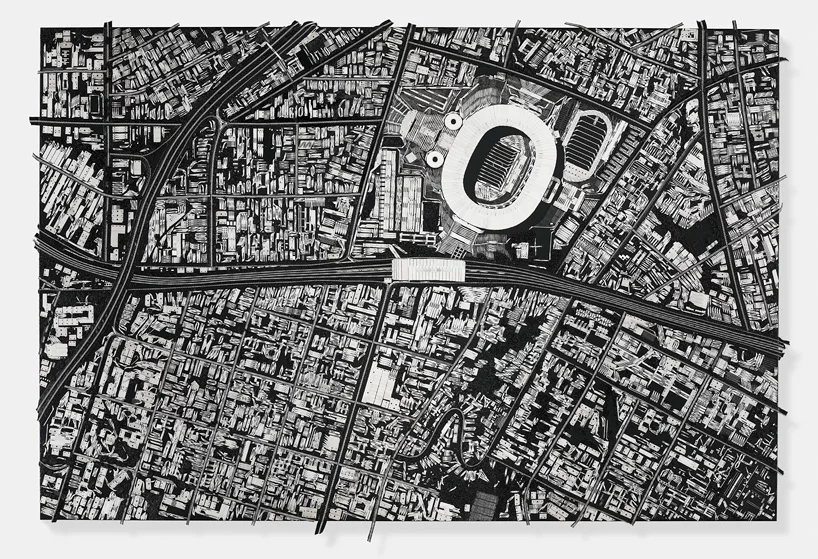Galleries
Damien Hirst Unveils New ‘Cutting Edge’ Works in Brazil


David Ebony

In recent years, Damien Hirst seemed to have suffered a creative block. He remains in the news mainly because of his real estate acquisitions, auction prices, social activities, and all the hype about his vast wealth and holdings. As far as his creative endeavors go, the veteran YBA (Young British Artist), who turns 50 next year, has been repeating himself endlessly, churning out variations on his familiar, market-driven series, such as the “spots,” “butterflies,” and “skulls.” Any serious artistic advances in his output were hard to find, and he risked boring his audience and damaging his brand.
A new series of works, however, unveiled earlier this week at White Cube in São Paolo, “Black Scalpel Cityscapes,” may signal something of a breakthrough for Hirst. These large paintings show dramatic bird’s-eye views of cities, especially politically charged urban centers like Moscow, Baghdad, Beijing, Hong Kong, and New York City’s Ground Zero. Photorealistically rendered, the images are made from vast amounts of surgical instruments, razor blades, hooks, safety pins and especially scalpel blades, all inset into densely painted black backgrounds. It must be a trial for assistants and gallerists to handle works with these ultra-hazardous surfaces.
As recently highlighted by Designboom, the exhibition, on view at White Cube São Paolo, through January 31, 2015, addresses issues of surveillance, urbanization and global conflict. Hirst has described the paintings as “portraits of living cities.” The scalpel blades have appeared before in the artist’s work. But here, they’re used specifically in reference to military terms like “surgical bombing” or “surgical strikes.” Both of-the-moment and forward-looking, the new works suggest that Hirst may finally be returning to the mode of thoughtful provocation that long ago brought him international fame and practically defined what was cutting edge.